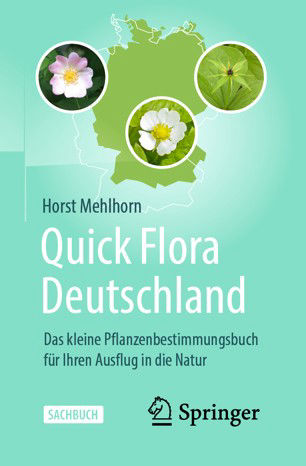
Flora of Germany for quick plant identification of over 1,000 species
ebook (84 MB/€ 29,99) ISBN 978-3-662-61696-3
Book (725 pages/€ 37,99) ISBN 978-3-662-61695-6
German edition
A single page table provides direct page access to over 1,000 different wildflower
species that occur in Germany. A table on the back of the book cover permits
fast plant identification with only a few additional steps required, most on a single page
and without even opening the book! This also works in the ebook where a large number
of hyperlinks support quick and easy access to pages when smartphones, tablets or PCs
are used. Keys are complemented with over 250 colour photographs and short descriptions of all
species to help you check the results of your identification efforts.



